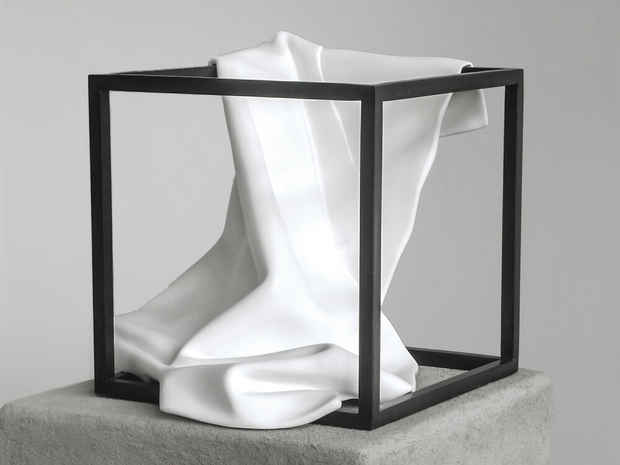Av Ryan and Linnaea Tillett “If Not, Winter”
FiveMyles

This event has ended.
This exhibition is a site-specific installation that stems from AV Ryan and Linnaea Tillett’s work and reflections on light, lighting, and sculpture. The text below is an excerpt from an essay on which the exhibition is based. Please click here to read the full essay.
Practically speaking, every lighting effect—from magical glow to harsh glare—depends on the interplay between several factors: the qualities of the surface and form of the object to be lit; the qualities and angle of the light source; and, finally, the ambient lighting conditions of the site. And these factors are always and everywhere unique. When we say that adding light in a thoughtful way can, in some cases, add an aesthetic dimension, we mean to focus attention first on the alchemy between these new materials and the lighting now available.
Each material’s surface does its own particular dance with light. Some repel it—such as mirrors and polished stainless steel. Some pull light into themselves and don’t let it go—tarmac and Cor-Ten steel, for example. Some fuse with light and become like it, like mother of pearl or certain galvanized metals. Some surfaces amplify the light—they take a single beam and kick it back in a softly glowing spray like white canvas or white Corian. Even the finish applied to each material, including the brand, sheen, and color of the paint, can alter how the work responds to light. Handled thoughtfully, nighttime lighting may allow novel reconfigurations to emerge with unexpected visual moments. In some cases, lighting sculpture may lend the work moments of indeterminacy, ambiguity, and desire to mean something more—a kind of repose from its stricter, daytime objecthood. Such a strategy may, over time, expand our notions of what sculpture, and objects more generally, can be.
When paired with the explosion of forms, materials and surface finishes of contemporary sculpture—each with its own unique interaction with light.
The afterthought approach assumes that the goal is to make the sculpture recognizable under nighttime conditions. We would like to suggest that adding light in a thoughtful way can, in some cases, add an aesthetic dimension, a special case of seeing the sculpture only possible at night. Such an approach might contribute to our understanding of a particular sculpture as a site of “plural cases of beauty,” rather than privileging a single, typically shadow-less, daytime view. A considered approach to lighting—or not lighting—sculpture in the landscape opens the door to experiencing the nighttime environment—and our treatment of it—as an aesthetic dimension in its own right.
In recent years, however, lighting’s possibilities—technologically, perceptually, and aesthetically —have grown significantly. Smaller, more robust, lightweight units are becoming available, making it possible to set lighting closer to the sculpture with less unacceptable shadowing and glare. Wide palettes of programmable color temperature are now available so that lighting can be fine-tuned to match the material palette of the work—to enhance the coolness of gleaming metal or burnish the warmth of wrought wood. It is now even possible to focus narrow beams of light on large sculptures without projecting light upwards into the night sky.
Yet it was only because sculptors began working with new materials with different reflective and refractive properties that artificial lighting of outdoor sculpture became a truly interesting proposition. Sculptural materials now include a wide palette of perforated, anodized, galvanized and polished metals; cast resins; reinforced fabrics; treated woods and a variety of painted finishes. Most are less resistant to artificial light and may in fact be enhanced or transformed by it.
Media
Schedule
from December 05, 2020 to January 03, 2021